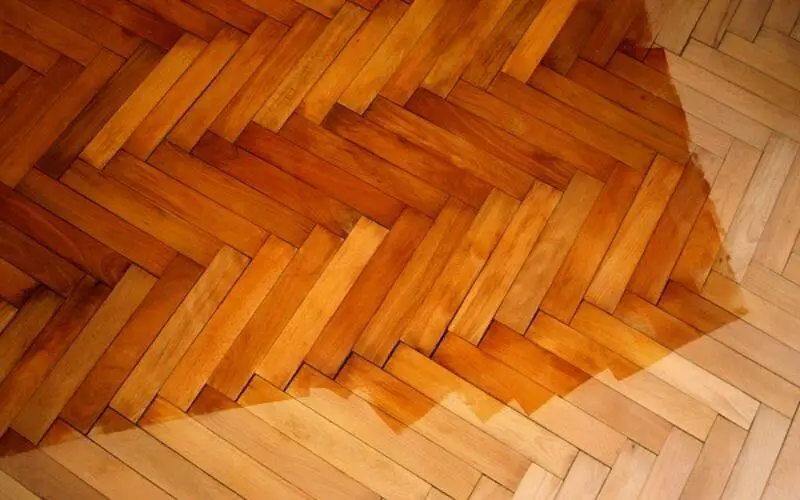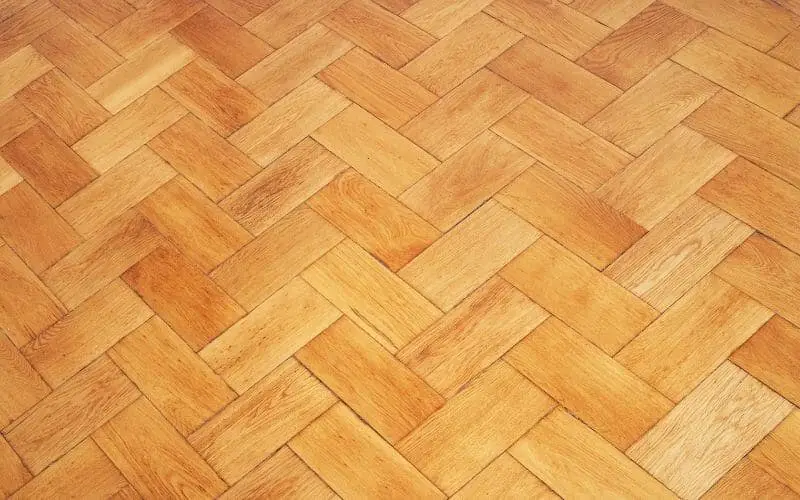Can parquet floors be refinished? Yes, although the steps to refinish parquet flooring might seem intimidating, be rest assured that once you know the correct process, it’s going to be a walk in the park. These steps can be used to refinish both new or existing floors.
When refinishing parquet floor, make sure to know how many times it has been sanded. If you take out too much wood, it might expose tongues and grooves, so try to make your cuts as efficient as possible. Without further ado, let’s discuss how to refinish parquet flooring.
5 Steps to Refinish Parquet Flooring
Table of Contents
Prepare The Floor
Before you begin sanding your parquet floor, you need to give it a thorough cleaning using a wax dissolving detergent. It is important that you make use of a quality parquet floor cleaner.
If your parquet flooring is old, it may have several layers, and each layer may stick to the sandpaper, which will only make it harder to sand the floor the boards; it might also have developed gaps between them over the years, causing them to become loose.
Fill the gaps and glue down loose boards before you begin sanding. With a grouting float, spread the filler generously over the entire floor. This will be sanded off on the first pass with the sander.
Also, clear the area that you intend to refinish, remove all furniture and personal objects from the room; this is to prevent them from being covered in dust which will be generated during the sanding process.
Read: How to move furniture without scratching floor
Sand The Parquet
Once the room is has been cleaned and prepared, it’s time to start sanding the floor. But keep in mind that this process should be done slowly and carefully. Parquet is usually made up of small tiles that have embedded pieces of wood within them, so there’s wood grain going in every direction.
To sand parquet floor, you need to use an orbital sander with a bag attached. Orbital sanders come with round or rectangular pads and function similarly to handheld orbital sanders.
Divide the floor into sections and do small amounts of work at a time; this will keep the dust from getting out of control. When using the sander, do not press it down too hard.
Do a quick pass with 36-grit paper to remove the filler, finish, and also wear down the curled boards; ensure to sand down the floor uniformly throughout the parquet to create an even look when you are finished. You can use a palm sander to get into areas where the big machine doesn’t reach.
Make a second pass with 60-grit paper to remove the rest of the finish and a third pass with 80-grit paper to erase deep scratch marks from the wood. A final pass with 100-grit paper prepares the floor for the application of finish.
Clean the Dust
After sanding down the room completely, you would need to clean up the dust from the room. This should be done thoroughly before the floor is sealed. You can use a vacuum or broom and dustpan for this.
Make sure that you do not leave any dust or dirt particles behind, as anything that is left on the parquet floor will be sealed into the finish.
Read: Should you dust or vacuum first?
Apply a Stain
The best way on how to restore parquet flooring without sanding is to start with applying stain to the floor. Staining your parquet flooring will help to enhance its appearance and also provide extra protection against wear by penetrating the grain and sealing the wood. Most floor stains are solvent-based and can be easily applied.
Use a rag to wipe the stain on the floor, allow it to sit for about 10 minutes, then wipe off the excess stain with a second rag. Stain your floor in sections and start working at the farthest end of the room and work your way toward the exit.
Most products require to be left overnight to dry. To achieve a natural finish for the parquet flooring, you may skip this step.
However, if you desire some type of color on your floor, you should apply a stain. There are a variety of stains available which can be altered in many different ways to achieve your desired look.
Read: How to stain laminate flooring
Apply A Finish
After you have stained your parquet floor, allow the stain to dry completely before applying a coat of polyurethane sealer on the top. You can choose an oil- or water-based floor finish, and it’s easier to spread with a floor finish applicator than a paintbrush.
A finish applicator is a weighted, foam-covered tube with a long handle. All you need to do is drag the applicator across the floor to spread the finish evenly, quickly, and without trapping any air bubbles or leaving brush marks.
Lightly sand each undercoat of finish before applying the next coat to achieve a smooth final finish. Place fans out in the area to quicken the drying of the polyurethane finish. Apply about three coats of polyurethane to ensure that the floor is properly sealed.
Use a floor buffer fitted with a 120-grit sanding a palm sander with 120-grit sandpaper to sand the floor between each finish application but Don’t sand the final coat.
Conclusion
This article discusses how to refinish parquet flooring, this procedure is heavily dreaded by most homeowners because of how complicated it is made to seem, but it’s a very straightforward process. With the right tools and steps, you can achieve a beautiful finishing on your parquet flooring.

